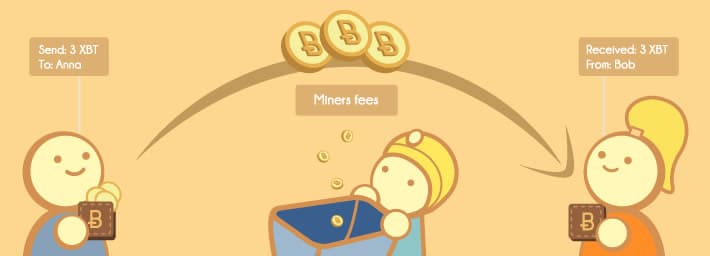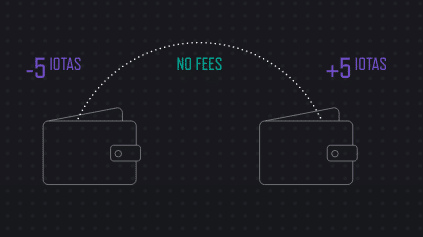Meet Tangle, Crypto’s Blockchain Alternative
You may have read our write-up on IOTA. If you have, great! If you haven’t, you might want to give it a glance.
Once you’re acquainted, the following information will make more sense, and you’ll see why people are so excited about IOTA and, more specifically, the tangle technology it runs on.
So what is the tangle and why is it revolutionary for the cryptosphere?
Let’s jump in.
The Internet of Things
To better understand the tangle’s functionality, it’s best to get a grasp on the Internet of Things (IoT) as a concept.
IoT is a network of appliances and devices that can exchange data through network connections, sensors, specific software, actuators, etc. The idea is that this Internet of Things constitutes a web of connectivity that allows devices to communicate with each other.
Think common smart devices you might find lying around your home. Google Home is a prime example. It’s a device that allows you to control your home media, access personal information from your Google accounts, and search for information on the internet with voice commands–it’s an all-in-one technological hub that facilitates data exchange with multiple devices.
The Internet of Things can also apply to business and industry technologies, from healthcare services such as heart monitors to a number of mechanized processes. The IOTA team built tangle with the Internet of Things industries in mind. The tangle will allow these devices to exchange data and payment for said data in an accessible, secure manner.
You’re probably asking yourself: couldn’t we just use blockchain for this? Yes, we could, but we wouldn’t want to. Reason being, the tangle allows you to send funds without any fees. That’s right. Your parents might have told you nothing in life is free, but the tangle is.
How is this possible? Well, to answer that question, let’s look at the key differences between blockchain and tangle technology.
No Need for Miners
This facet of tangle is the key to its no-fee usability. Tangle does not require miners to verify transactions like blockchain requires for cryptocurrencies like Bitcoin. With Bitcoin and the like, the computing power of miners and various mining pools are responsible for solving the encrypted algorithms that allow a transaction to be sent through and recorded in the blockchain. These miners are then paid a fee from the transacted amount for their work.
Tangle removes the need for this process entirely. Instead, it uses directed acyclic graphs verification to store and process transactions. This works through an intrinsic confirmation process whereby each user is responsible for confirming the transactions of other users. In essence, whenever you approve a transaction to be sent, that transaction then uses a selected algorithm to process two other unprocessed transactions.
Once these random two transactions are confirmed, your own will then be submitted to the tangle for processing and confirmation. Seeing as any transaction is responsible for the success of another, no fee is incurred because no third party is involved.
The Benefits of a Feeless, Miner-less Interface
No miners mean no transaction fees which means that the tangle can accommodate for micropayments.
Blockchain-based cryptocurrencies place a minimum on the amount of funds you’re allowed to transact. The logic here is apparent: no miner wants to receive fractions of a penny for processing a transaction worth a few cents. Since none of the sent amounts will be shaved off for transaction fees, the tangle allows users to send and receive as large or as little of a payment as they like.
Tangle’s system of intrinsic confirmation also ensures a more decentralized network as compared to its blockchain brother. As we’ve seen unfold recently with the Bitcoin and Bitcoin Cash civil war, mega-mining pools can threaten the decentralized integrity of larger cryptocurrencies.
These larger mining pools could have disproportionately direct hashpower from one Bitcoin network (e.g., BTC) to another (e.g., BCH). But under tangle’s model, each individual on the network acts as a miner with their transactions. Everyone who transacts also confirms, so no one has disproportionate sway or hashpower over any other user on the network. This facet also improves the scalability issue that Bitcoin has faced with its meteoric growth; every one transaction is responsible for approving two more, thus the more you partake in the network, the more you speed it up.
Improved Security
One of the blockchain’s major selling points is the enhanced security it entails for exchanging sensitive data. This security, complex encryption, is inherent to blockchain’s monetary asset, cryptocurrency.
However, critics of blockchain’s vulnerabilities have argued that quantum computing and quantum hacking could effectively render encrypted security measures useless. While no quantum computer has ever been constructed and the science is still in its theoretical nascency, it has the potential to seriously threaten blockchain’s integrity.
Yet again, the tangle seeks to capitalize on blockchain’s shortcomings. The tangle provides increased security measures that would safeguard against possible quantum computing attacks. IOTA’s development goes into a more thorough analysis of tangle’s security protocol in their whitepaper:
“…the algorithm used in the iota implementation is structured such that the time to find a nonce is not much larger than the time needed for other tasks that are necessary to issue a transaction. The latter part is much more resistant to quantum computing, and therefore gives the tangle much more protection against an adversary with a quantum computer when compared to the (Bitcoin) blockchain.”
Wrapping Up
IOTA’s tangle protocol is ultimately trying to solve blockchain’s inefficiencies by thinking outside of the block. The technology is ambitious and potentially revolutionary, and some analysis even argues that it could solve cryptocurrency’s issues by replacing the blockchain protocol entirely.
So far, IOTA is the only cryptoplatform to integrate Tangle technology. ParagonCoin plans to use IOTA in its infrastructure, but rather than establishing a separate tangle protocol, it is powered by IOTA’s own.
It’s quite possible that the tangle could provide feasible solutions to the problems that plague blockchain-based cryptocurrencies. However, IOTA has not yet implemented the tangle into an Internet of Things network, so we have yet to know if its modus operandi will be successful.
Until then, we will see if other cryptoplatforms follow IOTA’s footsteps and establish tangle networks of their own.
Never Miss Another Opportunity! Get hand selected news & info from our Crypto Experts so you can make educated, informed decisions that directly affect your crypto profits. Subscribe to CoinCentral free newsletter now.














